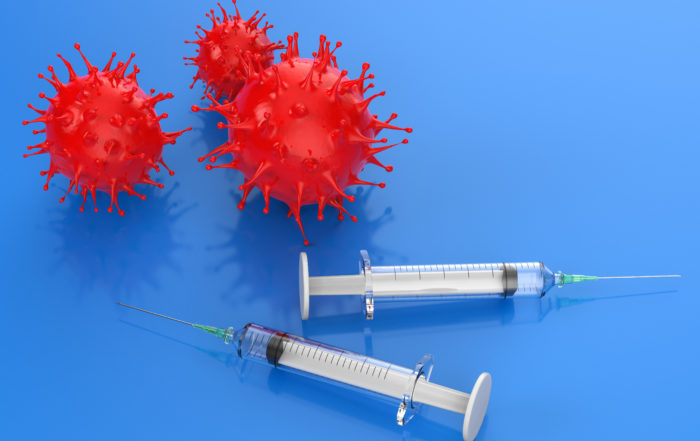
Improving Cooperation Between the Nicotine Industry and the Scientific Community: The Swedish Match Science Advisory Panel Experience
By Jim Solyst, John Hughes, & Karl Fagerström
The Swedish Match Science Advisory Panel meeting in Stockholm in mid-June 2019 focused on the company’s preparation of a Premarket Tobacco Application (PMTA) for its tobacco-free nicotine pouched product, ZYN. Staff chemists and toxicologists had just finished presenting data from stability, toxicity, extraction, and oral health studies, and, after Panel members and guests expressed high regard for the presentation, they made the seemingly reasonable suggestion that the studies should form the basis of a published article on the pharmacokinetics of ZYN.
The suggestion was reasonable and certainly appropriate to the spirit of science, but—and it was a big but—the studies were funded by a tobacco company to be used in a FDA regulatory application, which FDA was statutorily prohibited from sharing with the public.[1] Furthermore, the article was not to be written or reviewed by Swedish Match.
Was this a naive request from a group of mostly academics? Or was it representative of the possibilities of a relationship between a company and independent scientists determined to benefit the public health? The Panel was not put off by such questions because they also requested access to the ZYN PMTA consumer perception data in order to conduct their own analysis to determine why the product was so appealing to adult tobacco consumers.
Less than a year later, two articles, based on the ZYN PMTA pharmacokinetic and consumer perception studies, were published in the scientific journals Nicotine & Tobacco Research and American Journal of Addiction.[2]
Cooperation between tobacco and nicotine companies and the scientific community can be of benefit to public health, which is the fundamental goal of the Tobacco Control Act. Companies can certainly benefit from the advice and insight provided by external scientists; but more importantly, independent researchers can gain access to data to be used as the basis for published articles, providing much-needed analysis and transparency. The challenge is how to establish an arrangement that allows for open discussion and analysis, is beneficial to both parties, yet is also viewed by the larger scientific community as being credible and acceptable.
This article presents one approach to establishing a relationship between a company and independent scientists. The use of company data for the basis of published articles is a clear example of what can be accomplished, but this occurred six years after the Science Advisory Panel was formed—after the relationship had gone through challenges and evolved into an association that allowed for mutually beneficial undertakings.
Motivation for Establishing the Science Advisory Panel
It made sense for Swedish Match to establish a science advisory body that could provide advice and serve as a sounding board in the preparation of PMTA and Modified Risk Tobacco Product (MRTP) applications for General Snus, its brand of Swedish snus sold in the United States. The company was entering new ground and could benefit from the views of knowledgeable independent scientists.
But what was in it for the scientists? Why would they be willing to step into uncharted and likely controversial territory?
The motivation of the two founding members—Dr. Karl Fagerström and Dr. John Hughes—was straightforward: they believed in harm reduction, believed that switching from smoking to less risky products could save lives, and believed in the Swedish snus science. Fagerström and Hughes, like most nicotine scientists, were aware of the abundant evidence on Swedish snus, including the numerous published articles examining snus use and health data from longitudinal studies sponsored by Swedish governmental and institutional authorities. Fagerström, a Swedish nicotine researcher, had witnessed the “Swedish Experience,” in which smokers concerned about health impacts switched to snus, a traditional Scandinavian product. Hughes, a professor and clinician, was also aware of the Swedish Experience and was equally driven by his experiences with patients unable to stop smoking.
Although their principal motivation was the product, Fagerström and Hughes’ knowledge of the company was instrumental in their decision to help establish an advisory body. Both were aware that Swedish Match did not sell cigarettes and had defined the difference between Swedish snus and other snus and smokeless products by establishing a voluntary quality standard—GOTHIATEK®—that identified and set limits for harmful constituents.[3]
In addition, Fagerström knew Dr. Lars-Erik Rutqvist, an oncologist with the Karolinska Institute who had recently joined Swedish Match as Senior Vice President for Scientific Affairs. Rutqvist’s involvement in tobacco harm reduction started in the late 1980s when he was the senior researcher in the then-largest epidemiological study of risk factors for head-neck cancer in Sweden. The study formed the main evidence base for the European Health Authority’s decision in 2001 to remove the mandated cancer warning on the snus cans.[4] Although he was the company’s senior scientist, Rutqvist never quite shed the vestiges of academia, which gave comfort to Fagerström, Hughes, and other Advisory Panel members.
Hughes and Fagerström have been very transparent about their commitment to working with industry to benefit public health. In 2016, they submitted a Letter to the Editor of the journal Addiction titled, “Why Not Publish All Research That Passes Review?” which cited their service to Swedish Match,[5] and they also co-authored a 2018 letter to Addiction titled, “Why We Work with the Tobacco Industry.”[6]
Early Years of the Science Advisory Panel
The first meeting of the Swedish Match MRTP Advisory Panel was on March 14, 2013, during the annual conference of the Society for Research on Nicotine and Tobacco (SRNT). Fagerström and Hughes were founding members and past presidents of SRNT, and, during the 2013 conference, Fagerström received the SRNT Award on Clinical Science. However, Fagerström and Hughes’ interaction with Swedish Match concerned several SRNT leaders who did not believe such a relationship was appropriate given the industry’s troubled past. Although Swedish Match does not sell cigarettes and has a tradition of transparency, it is still a tobacco company and must bear the burden of the industry’s past. This view of the industry continues to be an obstacle to industry-scientific community cooperation, but the tide may be turning as individual scientists and policy analysts are increasingly expressing support for interaction, often during FDLI-hosted webinars.
Because of possible skepticism from the scientific community, the Panel knew it was essential to prepare—and make publicly available—a Mission Statement and Operating Principles document as well as meeting minutes. A crucial—and prescient—statement in the Mission Statement was the goal of having the Panel’s experience “serve as a model for the interaction between FDA, the scientific community, and tobacco companies.” Another key critical goal was to have the Panel provide a forum for discussion of various viewpoints and ensure that “the Advisory Panel’s deliberations will be guided by public health interests and will advance tobacco regulatory science.”
In the first few years, the Advisory Panel met in Stockholm in June and in Washington, D.C. in October. The agendas were dominated by presentations and discussions related to the preparation of the General Snus PMTA and MRTP applications, but the meetings also served as a forum for the Panel to pursue its goal of transparency and the exchange of views with guests from public health and tobacco control organizations. At times, the two goals of application preparation and transparency literally converged, as when Dr. David Abrams, then the Executive Director of the Schroeder National Institute of Tobacco Research and Policy Studies at American Legacy Foundation (now the Truth Initiative), arrived to a meeting earlier than expected and witnessed an application briefing from Swedish Match’s Washington, D.C.-based outside counsel.
In November 2015, FDA authorized the marketing of the eight General Snus products sold in the U.S. through the PMTA pathway. The decision was historic to FDA because, according to Center for Tobacco Products (CTP) Director Mitch Zeller, “Today’s action demonstrates that the premarket tobacco application process is a viable pathway under which products can be marketed as long as the public health can be protected.”[7]
For the Advisory Panel, it provided validation for the involvement with Swedish Match, and it offered insight into what evidence was of most significance. Most important to FDA—the first reason presented in the decision document—was that the products are “produced with a voluntary, proprietary standard using acceptable manufacturing processes . . . .”[8] A key component of the “proprietary standard,” which Swedish Match named GOTHIATEK®, is the setting of limits for Harmful and Potentially Harmful Constituents (HPHCs). The PMTA decision document highlights the low levels of NNN and NNK, both of which are HPHCs of great concern: “The proposed products contain significantly lower levels of NNN and NNK compared to over 97% of ST products currently on the US market.”[9]
Introduction to ZYN
The June 2016 meeting of the Advisory Panel was disturbed by the news that the company had introduced a tobacco-free pouched product—ZYN—to the U.S. market, which was selling much better than General Snus. The Panel was unsettled by this news and was particularly concerned by the absence of published articles presenting data on the product. Swedish Match staff explained they were in the process of conducting studies necessary for the PMTA process and would certainly share the data with the Panel. This commitment was reassuring, but the minutes of the meeting reflect their continued apprehension:
The Panel does not wish to be involved in the preparation of a ZYN PMTA but would appreciate being kept informed. The Panel stated that its original intentions were to focus on the MRTP process, as is cited in the Panel Mission Statement. In addition, the Panel is unfamiliar with ZYN and understands the tight timeframe provided to prepare a PMTA.
However, once the Panel members recovered from the initial shock of the news, and with the benefit of ongoing briefings, they realized the potential public health benefit of ZYN. They understood that ZYN was very similar to General Snus regarding HPHC levels and, importantly, had no detectible levels of NNN or NNK. In addition, preliminary data indicated the product was appealing to current adult smokeless users and smokers, and there was no indication it was being used by youth.
Perhaps the most insightful comment came from Hughes who characterized ZYN as being “NRT in a pouch.” The NRT (nicotine replacement therapy products) comparison was supported by Fagerström, which is significant because he was an early contributor to the development of NRT products, starting in 1975 with work on nicotine gum and later contributing to NRT developments such as patch, spray, pouch, and inhalers. Fagerström later developed a product very similar to ZYN—Zonnic Pouch—which was bought by Reynolds Tobacco in 2009.
The ZYN introduction episode was instructive to Swedish Match staff as well the Panel. Staff were focused on the regulatory process and believed the Panel members would immediately understand that HPHC levels and other comparisons to General Snus could result in the issuance of a PMTA. To the Panel members, regulatory science, although important, was not the same as the traditional scientific process that culminates in a published article. The experience also reinforced the Panel’s view of its role, which is to provide review and advice but not be an active participant in the regulatory process.
The introduction to ZYN episode also demonstrated the importance of the Panel’s practice of ending meetings by gathering in executive sessions without Swedish Match staff. These sessions allowed for frank discussions and the opportunity to develop messages to convey to Swedish Match senior scientists (initially Dr. Rutqvist and more recently Dr. Tryggve Ljung), as well as Fredrik Peyron, Senior Vice President for Regulatory Affairs & Group Communications.
Shift of Focus from General Snus to ZYN
From 2016 onward, the Panel focused on ZYN as well as General Snus, but the work on the two products was very different. For General Snus, the focus was on reviewing proposed studies necessary to test an MRTP health claim that would be acceptable to FDA. The Panel provided a similar review role for Postmarket Surveillance studies once the MRTP was awarded in 2019.
ZYN posed a different challenge because PMTA applications, unlike MRTPs, are not publicly available. The Panel had found the transparency of the MRTP process to be highly beneficial to achieving its Mission Statement goals and was concerned that the lack of publicly available data could impact how the scientific community viewed ZYN and other alternative products. The Panel’s advice to Swedish Match was twofold: (1) make ZYN PMTA data available to researchers to form the basis of published articles; and (2) seek out opportunities to present the evidence to individual researchers and scientific organizations.
As described in the opening of this article, it was the Panel that initiated the process that resulted in two published articles. Swedish Match deserves credit for presenting the evidence, but it was the Panel members, who were not encumbered by issues of propriety or perception, that made the direct request. They simply found the data to be compelling and believed it was in the best interest of science and public health that it be publicly available.
The experience with the ZYN-based articles provided Swedish Match with the credibility and confidence to seek out opportunities to present evidence to individual researchers and scientific organizations. For example, in May 2020, staff made a ZYN PMTA presentation to the International Tobacco Control Evaluation Project (the ITC Project), a collaborative group of international health organizations and policymakers. The virtual meeting was arranged by Dr. Mike Cummings of the Medical School of South Carolina, who was familiar with ZYN and other pouched products and was aware of the work of the Science Advisory Panel. Following the virtual meeting, Dr. Cummings sent a message to the call participants attaching the two ZYN publications that were cited during the presentation.
Path Forward
The Swedish Match Science Advisory Panel will continue to provide advice to Swedish Match regarding General Snus, ZYN, and how best to communicate with scientific and public health communities. In the near term, the Panel looks forward to reviewing the General Snus Postmarket Surveillance evidence and helping to communicate the significance of the MRTP decision.
The Panel also anticipates offering advice on what they consider to be the most pressing ZYN challenge: how to market a low-risk product in a manner that encourages adult tobacco consumers to switch but does not contribute to an increase in youth usage. This is a challenge that requires the involvement of a range of stakeholders, and perhaps the Panel can provide a forum for such a discussion.
There will always be disagreements and potential conflicts, but there should be certain agreed-upon facts and appreciation for the scientific process. The most significant lesson from the Science Advisory Panel experience is that cooperation between companies and independent scientists can be fruitful and is vital to achieve maximum public health benefits.
[1] Family Smoking Prevention and Tobacco Control Act, Pub. L. No. 11-31, 123 Stat. 1776 (2009).
[2] Erik Lunell, Karl Fagerström, John Hughes & Robert Pendrill, Pharmacokinetic Comparison of a Novel Non-Tobacco-Based Nicotine Pouch (ZYN) With Conventional, Tobacco-Based Swedish Snus and American Moist Snuff, 22 Nicotine & Tobacco Res. 1757 (2020), https://doi.org/10.1093/ntr/ntaa068; Nantaporn Plurphanswat, John Hughes, Karl Fagerström & Brad Rodu, Initial Information on a Novel Nicotine Product, 29 Am. J. on Addictions 279 (2020).
[3] Lars E. Rutqvist, Margareta Curvall, Thord Hassler, Tommy Ringberger & Inger Wahlberg, Swedish Snus and the GothiaTek Standard, 8:11 Harm Reduction J. (2011).
[4] Directive 2001/37/EC of the European Parliament and of the Council of 5 June 2001 on the Approximation of the Laws, Regulations and Administrative Provisions of the Member States Concerning the Manufacture, Presentation and Sale of Tobacco Products, O.J. (L. 194), http://data.europa.eu/eli/dir/2001/37/oj.
[5] Karl Fagerström & John Hughes, Why Not Publish All Research That Passes Review?, 111 Addiction 939 (2016).
[6] John Hughes, Karl Fagerström, Jack Henningfield, Brad Rodu, Jed Rose & Saul Shiffman, Why We Work with The Tobacco Industry, 114 Addiction 374 (2019).
[7] Press Release: FDA Issues First Product Marketing Orders Through Premarket Tobacco Application Pathway, Center for Tobacco Products, U.S. Food & Drug Admin. (Nov. 10, 2015).
[8] Premarket Tobacco Application (PMTA): Technical Project Lead (TPL) Review, Center for Tobacco Products, U.S. Food & Drug Admin. (2015), https://www.fda.gov/media/94582/download.
[9] Id.
Update Magazine
Winter 2020










